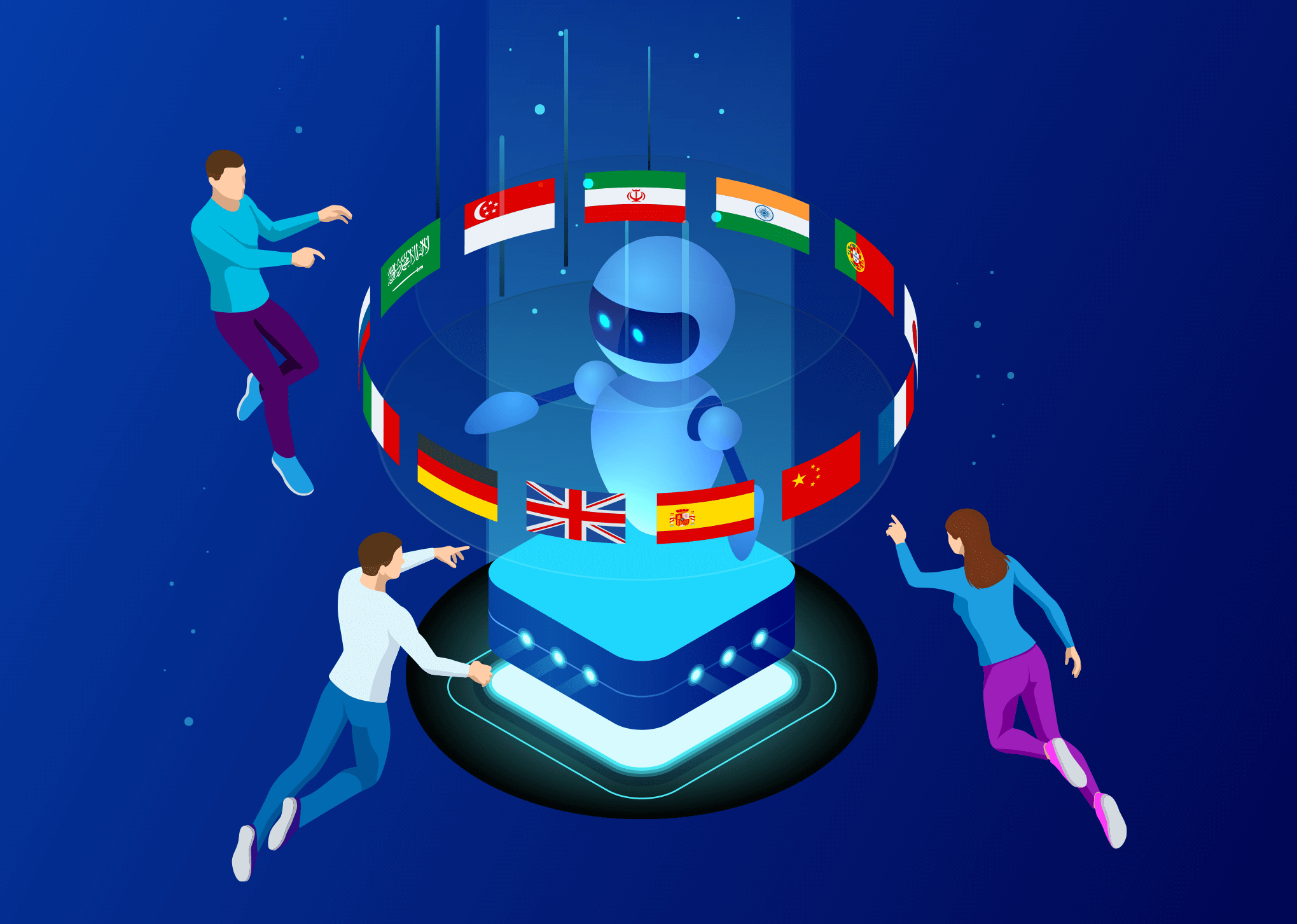
By Sarah J
April 7, 2023
Leveraging Translation Technology in an AI World - Part 2

If you’ve not read Part 1, go ahead and read that first, then come back here to finish off this two part Q&A with Ildiko, the Solutions Architect at GTH.
“You left us on a bit of a cliffhanger in part 1 as you wanted to go and talk about AI and its role in localization. The floor is yours, Ildiko.”
So, I want to talk a lot more about using AI when it comes to localization. The simple truth is that AI doesn’t have enough experience when it comes to the culture or the understanding of business. Sure, it can help and as I said in the first part, AI does assist us. What every business needs to know, though, is that AI isn’t the localization turnkey solution a lot of brands seem to be leaning towards.
In my position as the Solutions Architect here at GTH, it’s my responsibility to evaluate the pros and cons of all systems we’re using or are thinking about using. So, I think it’s good for me to take a deep dive into AI and its role in localization.
“Please do, Ildiko”!
AI has three distinct levels or subfields. It shares techniques, algorithms, and knowledge, which is great. At GTH, here’s how we leverage AI when it comes to localization.
Machine Learning
Machine Learning, or simply ML, which is the acronym we use, is a technology that tracks patterns present in data. In our case, that data is the translation of content. So, ML uses algorithms to automatically improve results. It also gets smarter over time, which is a plus for us here at GTH. When it comes to us localizing, let’s say a sportsbook or online casino website, we do use ML to identify patterns in the language.
Deep Learning
Deep learning, or DL for short, is a facet of AI that trains computers to mimic or replicate the function of the human brain. When it comes to the localization process at GTH, we definitely leverage DL technology as it helps us track changes in language nuances in real-time and respond smartly with the correct solution.
Natural Language Processing
NLP or Natural Language Processing is another aspect of AI. It trains computers to learn and understand human languages. We use NLP as a way to extract information and insights from the source text we’re working on. It’s also great at empowering us to categorize documents, as well as organize content.
“Really interesting! So, how reliant is GTH on AI?”
We simply use it as a tool. Think about a carpenter. He or she has a piece of wood, or multiple pieces of wood and it’s their job to produce a table, chairs, or whatever they’re about to create. Carpenters rely on tools to create. We use AI in a comparable way here at GTH.
“Tell me about MT technology, and more importantly, how GTH uses MT when it comes to post-editing, as well as when you guys use it.”
MT or Machine Translation is used by us, and it’s really helpful as we’re translating millions of words per month. Therefore, the adaptation of the MT system is there to allow us to perform better on enterprise content. There are a lot of companies – companies you know that use MT. eBay and AirBnB are two brands I know you’ve heard of, then there’s AliExpress, too. Even though we use MT, I’d say it covers around 15% to 25% of the localization work we do.
“Oh, so not that much then? Why is that”?
MT does relatively well, but as we’ve seen, we cannot rely on it 100% as it simply doesn’t meet our expectations, nor does it meet our stakeholders’ requirements. And to be honest, there are at least four primary reasons why MT is simply a tool we use and not the sole localizing factor:
- We expect the best when it comes to localization. Our clients expect the best, too. MT definitely drives productivity, but only when an experienced localizing officer here at GTH reviews the output.
- I’d also say that most LSPs (Localization Service Providers), like us, work on hundreds if not thousands of smaller projects, which means MT can’t really help.
- Effective MT adaptation is hard. Okay, so we’ve mastered it here, but it still takes time, and it also misses some of the nuances which are needed.
- And finally, I’d go as far as saying that skilled MT system operators aren’t prevalent in a lot of localization agencies.
So, just like AI, MT is a tool we use. It makes up part of our localization mix.
“We’re going to have to have another one of these Q&As as this has been super interesting!”
Looking to expand? Try out our FREE localization QA audit!
At GTH, we’re big on testing! To prove this, we want to test your website to see if it passes all of our localization checks. Once we’ve tested your site, we’ll provide you with an audit on just how localized it really is.
Simply click here https://gthtranslation.com/lqa-services, fill in your details at the bottom of the page and we’ll do the rest! The LQA audit is key as it will show you if you’re communicating with your clients or customers (in different geos) properly.
Take us up on this offer!



 English
English Greek
Greek +44 730 8577 353
+44 730 8577 353 +357 25 55 42 10
+357 25 55 42 10